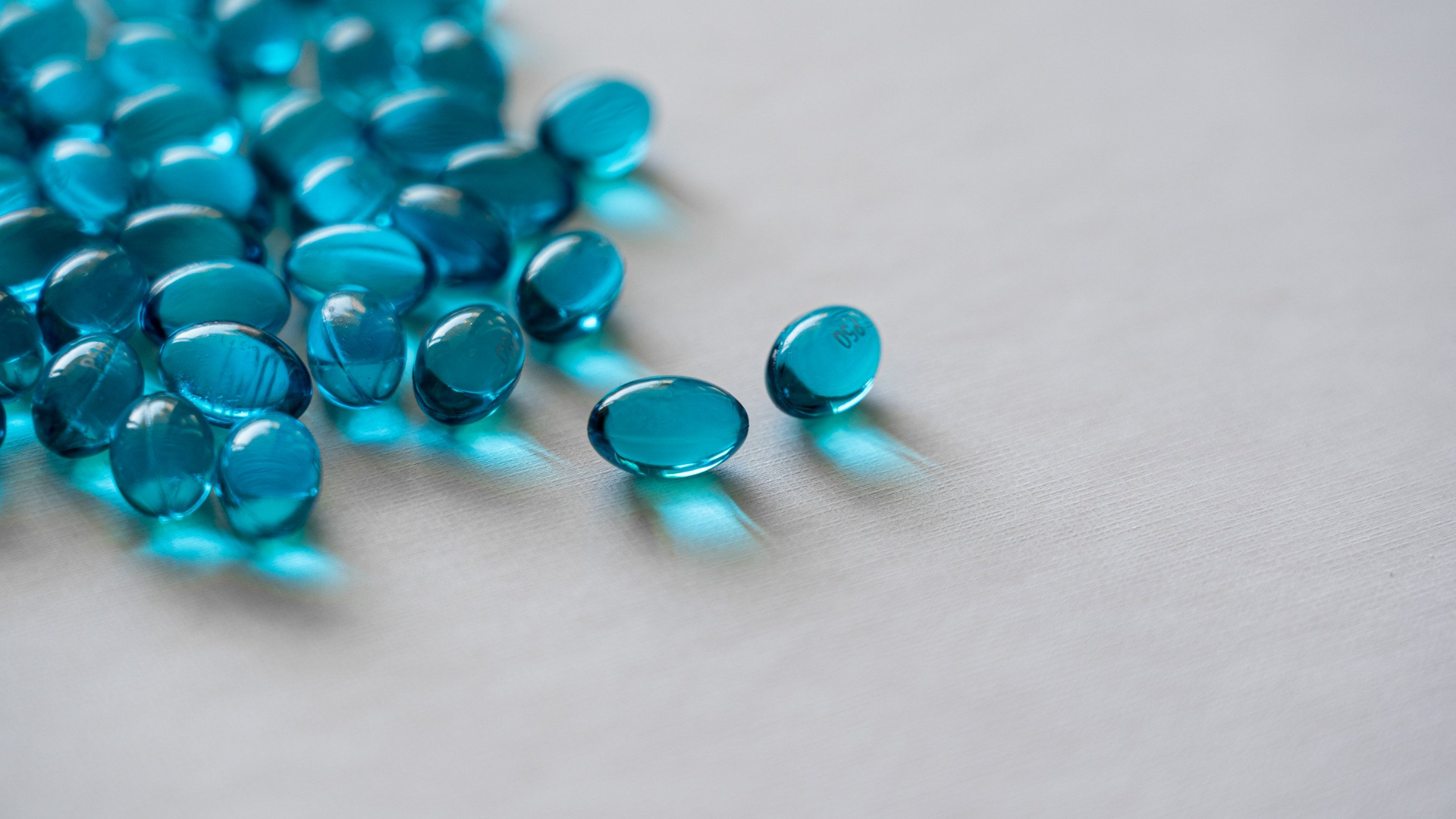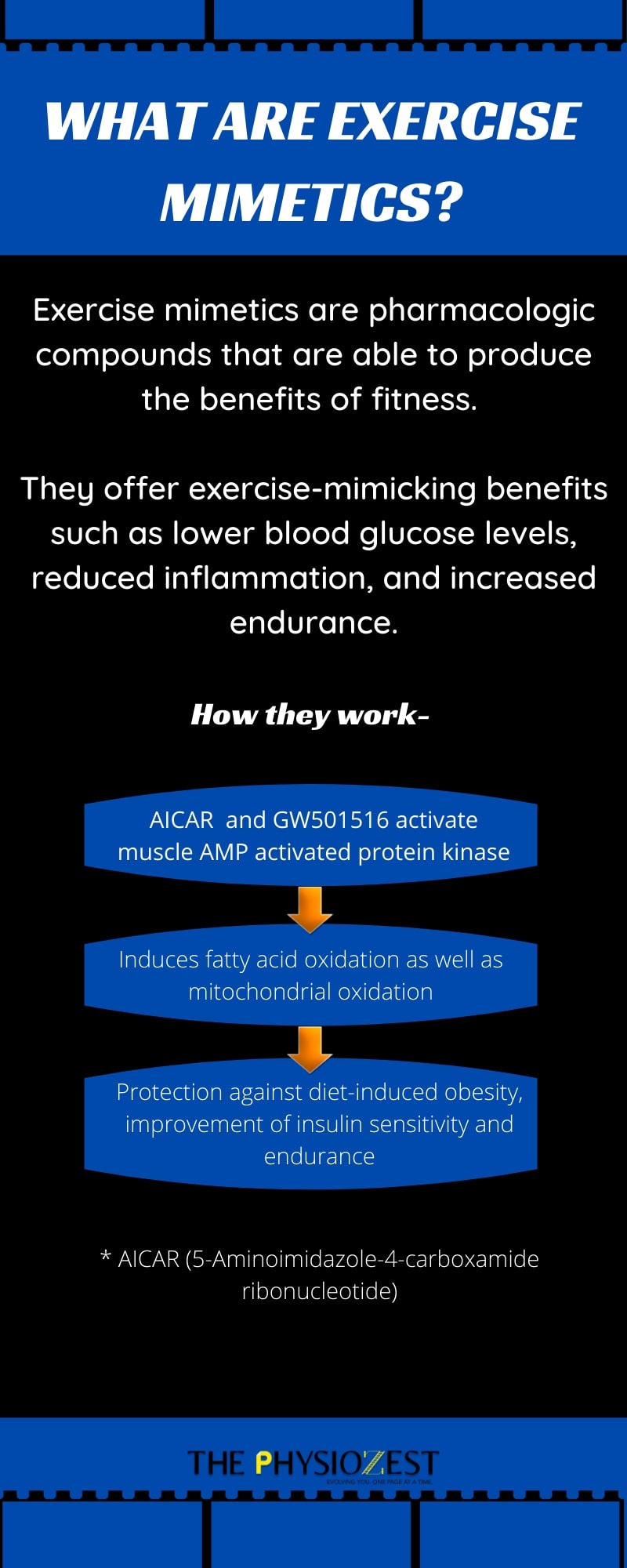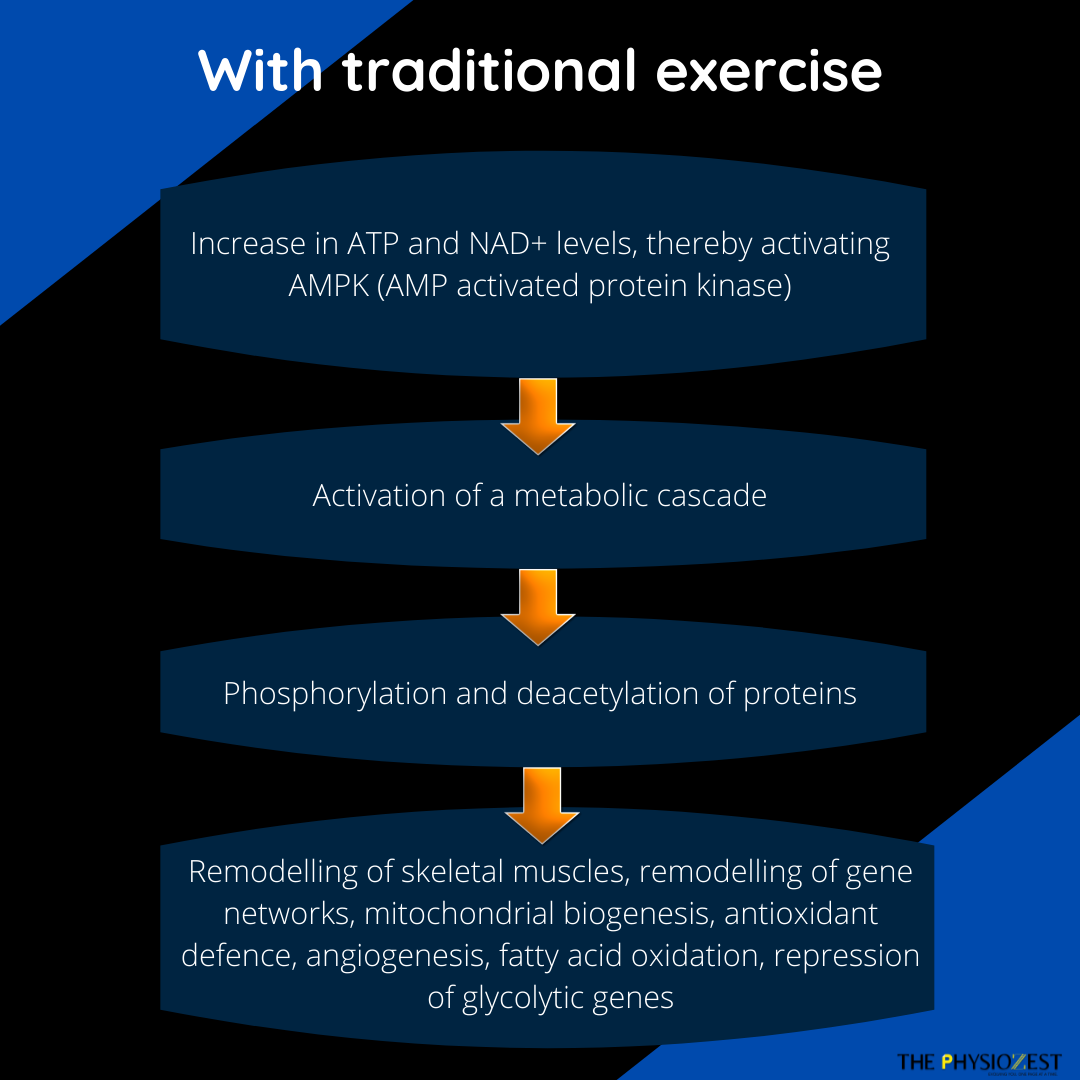
7 min read | Think Tank
Exercise Mimetics: One Pill a Day Keeps Workouts at Bay?!
Written by Priyanka Mehta
Graphics by Divya Sharma
Audio by Nidhi Joshi, Priyanka Mehta
Share this article
Table of contents
Imagine this- you come home from a long day at work, ready to get on a Netflix binge-fest, and you remember about the exercise pact. While there is the fighting of urges to get up, you hit “How to exercise without getting up” on Google search and voilà, an exercise-mimetic pill so you never have to leave your couch!
Where it all began
Before you get too excited about this apparent god-sent pill for couch potatoes, here’s everything you need to know about it. It all began in the early 2000s when a biologist, Ronald M. Evans, at the Salk Institute for Biological Studies in La Jolla, California, used a chemical compound known as GW501516, or simply, 516, on some lab mice. To his surprise, the test showed that after just four weeks, the mice that were fed this compound could run twice as far on their exercise wheels compared to the ones that hadn’t. Not only that, their body-fat percentage shrank and there was a marked dip in their insulin resistance. Over time, more of their muscle composition shifted towards slow-twitch, oxidative fibers. Evans has, since then, been unstoppable in his quest to develop an exercise mimetic pill for humans, which has shown promising results for the future.
What are Exercise Mimetics?

Two of the most commonly known exercise mimetics are GW501516 and AICAR. To know how these compounds act in the body, let us first understand the molecular effects of exercise in our bodies.

Traditional exercise causes an increase in AMP and NAD+ levels that activates the metabolic enzyme, AMPK (AMP-activated protein kinase). Activation of this enzyme triggers a metabolic cascade that causes phosphorylation and deacetylation of proteins concerned with the remodelling of skeletal muscles. This, in turn, promotes the remodeling of a network of genes responsible for mitochondrial biogenesis, antioxidant defense, angiogenesis, fatty acid oxidation, and the repression of glycolytic genes. AICAR, when introduced in mice, directly activates muscle AMPK, hence triggering the same process of mitochondrial biogenesis and fatty acid oxidation. When GW501516 is co-administered with AICAR in mice, researchers observed a synergistic boost in its effect, potentially leading to the production of a future polypill.(1)
Benefits of the miracle pill
In general, exercise mimetics offer exercise “mimicking” benefits, such as
A proposed mechanism of such an action, as described in Evan’s research, is linked to the activation of uncoupling proteins that dissipate mitochondrial membrane potential into heat, thereby releasing energy. In a study by Kobilo et al., both AICAR and GW501516 have also been credited with promoting hippocampal neurogenesis and spatial memory without crossing the blood-brain barrier. (2) Another potential benefit of these compounds is the release of myokine, a type of cytokine produced and released by skeletal muscles. (3) These hormones have been in the limelight for quite some time owing to their promising benefits of treating metabolic diseases through their ability to stimulate the signaling of AMPK, increased glucose uptake, and fatty acid oxidation.
Owing to its potential, exercise mimetics have had a reputation of being used as doping agents by athletes. They’ve been sold in the black markets of the sporting world. Therefore, the World Anti-Doping Agency (WADA) banned the use of both AICAR and GW501516 since 2009. In spite of this, many athletes in the recent past have been suspended from tournaments for testing positive for these substances.
Too Good To Be True?
Despite the staggering benefits observed by these pills, why are they far from being cleared by the Food and Drug Administration (FDA) for human consumption? In 2007, the original creator of 516, GlaxoSmithKline, hit the brakes on the Phase III trials of the compound when they unexpectedly found that mice that had been given large doses of the compound for almost two years developed cancer at a higher rate than the mice in the control group. Another issue observed by Weihrauch and Handschin in their research was that sustained use of the pills led to drug-induced ‘metabolic overdrive’. This caused the body to be in a chronic catabolic state, proving to be detrimental to health. (4) Yet another study suggested that prolonged use of AICAR can lead to neurodegeneration(5) and liver failure. Less serious side effects include, but are not limited to, headaches, abdominal pain, nausea, and dizziness.
Who is the pill really meant for?
Evans’ initial goal was to use these compounds to treat children suffering from Duchenne Muscular Dystrophy (DMD), hoping to improve their quality of life. In principle, they could also be used for
Shortcomings of the pill
Theoretically, these pills can lower blood lipids, reduce blood pressure, act as anti-thrombotic, blunt autonomic responses, and lower blood glucose concentration.
So if the goal is to improve cardiometabolic risks among individuals who will not, or rather, cannot exercise, the pill is a no-brainer. However, can these pills ‘mimic’ all the benefits of exercise?
1. Lack of complete anti-atherogenic effects
A Nobel prize-winning discovery showed that endothelial cells in blood vessels detect shear stress forces when the movement of blood is detected, triggering their activation. This produces myriad anti-atherogenic effects, greatly reducing the risk of atherosclerosis.(6) Although arterial shear stresses can be produced through various elaborate laboratory procedures, the most fundamental and natural stimulus that triggers such stress is human movement through increased blood flow. This cannot be obtained by the pill.
2. Fails to prevent Osteoporosis
Several studies have established that optimal mechanical loading of bones causes osteoblast differentiation and mineralisation, as well as maintains bone mineral density. Exercise mimetics fail to tackle the osteoclastic activity of the bones, which leads to increased resorption and, eventually, loss of bone mass.
3. No evidence of increasing muscle strength or mass
Diving deeper into the practicality of the pill, we realise that there is a paucity of literature to prove that these pills, other than improving endurance in skeletal muscles, also increase strength and muscle mass.
4. No post-workout euphoria
Another drawback is the lack of release of endorphins, which are released post traditional exercise methods. These “feel-good” hormones play a key role in improving psychological health. One might reap some benefits of exercise with the pill but fail to experience post-workout elation.
So is it safe to assume that occasional consumption of exercise mimetics could reap maximum benefits of the drugs with minimal side effects? “Not so fast”, cautions Dr. David L. Katz, director of the Prevention Research Centre at Yale University School of Medicine. He believes that “the evidence of benefits is strong, but the relevance to people is uncertain at present.” This stems from the fact that most of the studies have been performed in mice, the actual effects of the pills in humans still remain elusive. Any molecule that affects metabolic processes in the body, maybe interacts with several systems in ways that we don’t fully understand yet.
While exercise mimetics may be a dream come true for athletes and couch potatoes alike, the possibility of them hitting the shelves soon is… well… still just a dream. The concept of fully mimicking exercise is still, by large, in its fetal stage, with many challenges to overcome. These pills do not paint a picture of a utopian future just yet, but we can be hopeful. Lifestyle modification with a balance of exercise and nutrition still tops our priority list to stay fit and combat the physical inactivity epidemic world over. As for now, we’ll be dragging our lazy selves to the gym, praying to the God of Science to bless us with this miracle pill soon. What about you?
*AICAR: 5-Aminoimidazole-4-carboxamide ribonucleotide
*AMP: adenosine monophosphate
*AMPK: adenosine monophosphate-activated protein kinase
*NAD+: Nicotinamide adenine dinucleotide
